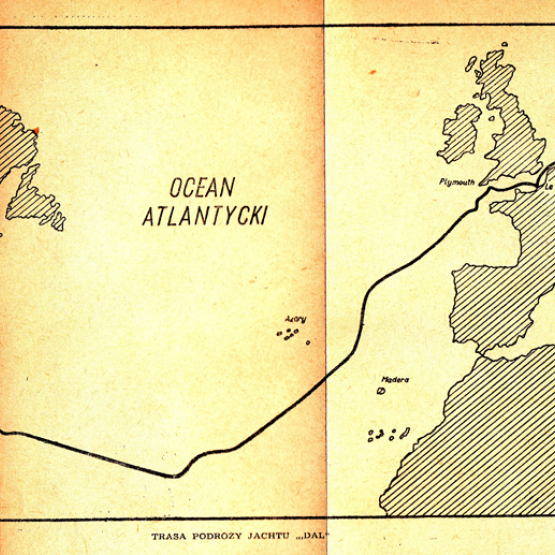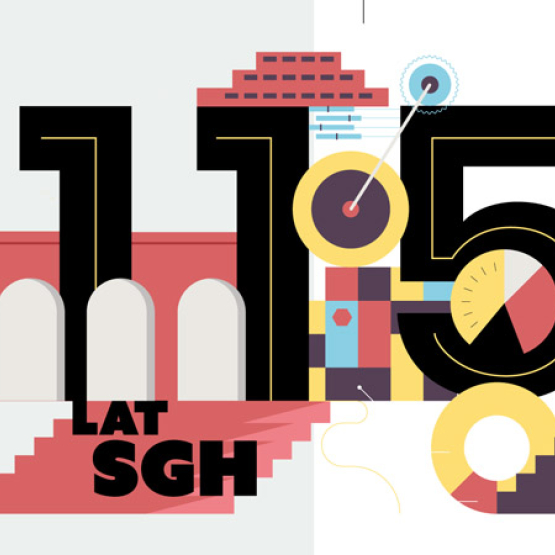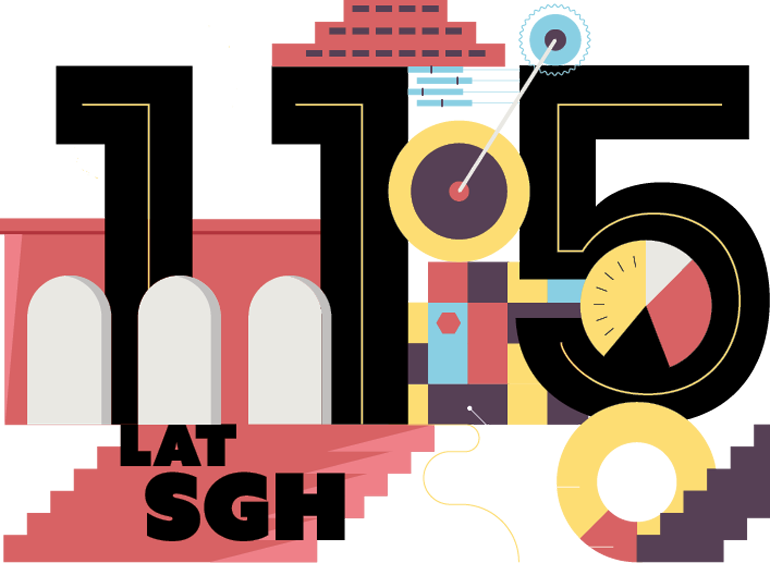
The History of SGH Warsaw School of Economics – PART I. THE ORIGINS
The origins of today’s SGH Warsaw School of Economics go back to 1906 whereby August Zieliński obtained a permit from the tsarist authorities to found courses of commerce. The permit of the tsarist Ministry of Trade and Industry of 7 August 1906 to found Private Courses of Commerce for Men, stored carefully in SGH Archives, marked the beginning of a long-standing activity of our university.
The following was the goal set in the statute of Higher Courses in Commerce Society as approved by the Russian authorities in 1907: “to encourage and popularise the Polish higher commercial education.” Fifteen students were admitted to the first year, and twenty-five candidates – to a preparatory course. The courses in commerce lasted two years of study. It was not education in the academic sense yet. The two-year courses educated merchants and book-keepers.
The Private Courses of Commerce for Men were first inaugurated as early as 13 October 1906 in Warsaw, at 9 Smolna Street. The inauguration lecture on the history of economic doctrines was delivered by Jan Kucharzewski. In 1908, seventeen first graduates received their diplomas.
FOUNDERS
Undoubtedly, it is worth taking a closer look at our university’s founder. August Zieliński (1861–1908) was a graduate of Leopold Kronenberg School of Economics in Warsaw and a scholarship holder of the Higher School of Economics in Leipzig. He was a lecturer at the Kronenberg School, he was in charge of Jadwiga Siemiradzka Higher Courses in Commerce for Women and School of Commerce of the Association of Merchants of the City of Warsaw. He was a visionary who would develop the idea of educating the youth. Regrettably, the untimely death of 47-year-old August Zieliński in 1908 interrupted his activity, yet, the idea to educate economists remained. It should also be mentioned that as early as 1909 the name of Private Courses of Commerce for Men was changed to August Zieliński's Higher Commerce Courses.
Permit of the tsarist Ministry of Trade and Industry of 7 August 1906 for August Zieliński to found Courses in Commerce for Men
The school’s other visionary was Bolesław Miklaszewski (1871-1941), who was appointed the manager of the courses on 2 March 1912. He was a graduate of the Technical Chemistry Faculty of ETH Zurich and he worked at the Lviv Polytechnic National University. In 1900, he obtained a doctoral degree from the university in Zurich. As an activist of the Polish Socialist Party, he suffered repression by the tsarist authorities. After having served prison sentence and being forced to resettle in Russia, he came back to Warsaw in 1905. Miklaszewski was an outstanding state activist. From 1923 to 1924, he headed the Ministry of Religious Denominations and Public Enlightenment, and from 1935 to 1939 he was in the Senate of the Republic of Poland.
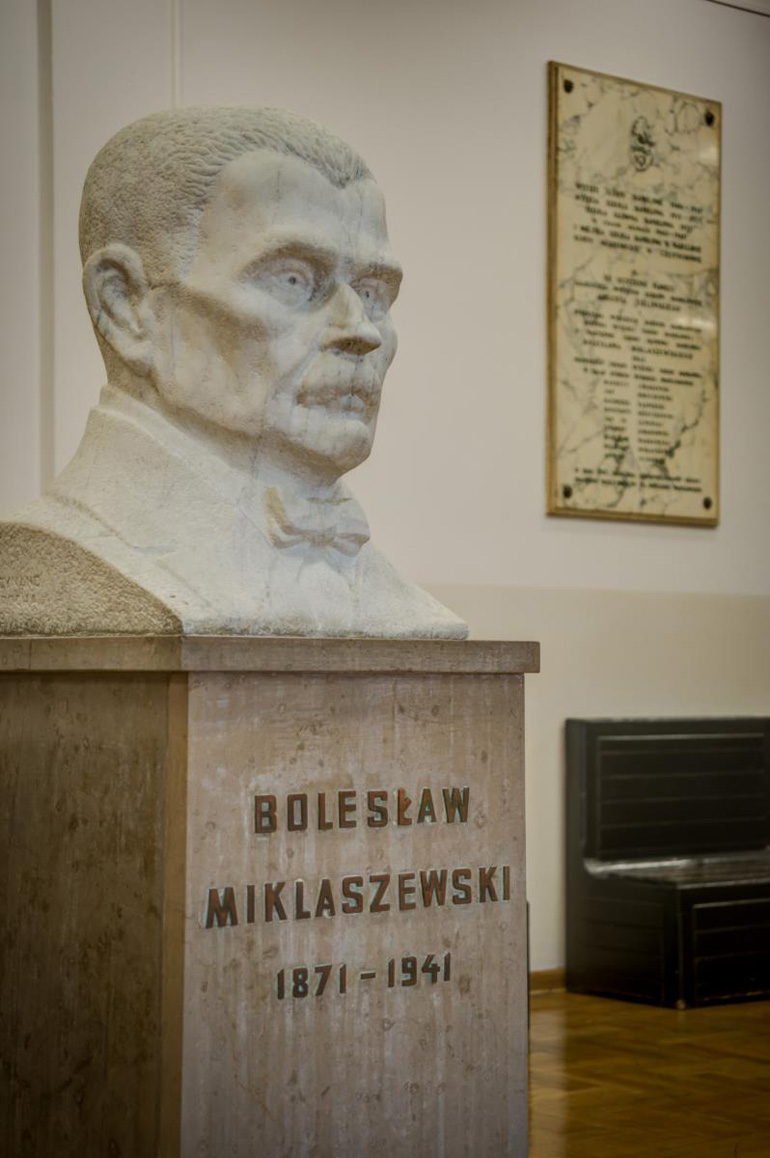
Wandering around today's SGH campus, it is worthwhile to stop on the first floor of Building A. There is a bust of Boleslaw Miklaszewski founded by SGPiS alumni in 1971 to commemorate his 100th birthday anniversary.
OUR UNIVERSITY AS AN INSTITUTION OF HIGHER EDUCATION AS OF 1915
From 1906 to 1915, a total of 689 students were admitted for the courses. 236 students completed their education at the school. An important event took place in October 1915 whereby the Enlightenment Faculty of the Civic Committee classified August Zieliński Higher Courses in Commerce an institution of higher education and renamed it Warsaw Higher School of Commerce (WSH). On 1 October 1917, the first matriculation ceremony of WSH students took place. In November 1917, the Scientific Council granted women the right to study at the school (hard to believe that the courses used to be once for men only).
In the Act of 13 February 1924 on granting the Warsaw Higher School of Commerce the rights of academic state-run schools (Journal of Laws of 1924, No. 119, item 185) it was established the university had the right to confer professional and academic degrees. Pursuant to the Act, Senate held the highest authority. It consisted of all WSH professors.
By the Regulation of 23 March 1925, the Ministry of Religious Denominations and Public Enlightenment nominated the first professors and associate professors of Warsaw Higher School of Commerce. Professor nominations went to: Maurycy Chorzewski, Jan Dmochowski, Kazimierz Kasperski, Konstanty Krzeczkowski, Zygmunt Limanowski, Jan Stanisław Lewiński, Bolesław Miklaszewski and Antoni Sujkowski, and the following became assistant professors: Leon Babiński, Wacław Fajans, Aleksander Jackowski, Marian Kowalski, Edward Lipiński, Julian Makowski, Edward Rose, Marceli Różański and Henryk Tennenbaum.
The position of rector was introduced by an Act of 13 February 1924 on granting the Warsaw School of Commerce the rights of academic state-run schools. The first rector elected by the Senate on 2 April 1925 was Bolesław Miklaszewski. He held the honourable position from 1925 to 1928 and from 1932 to 1933.
MODERNIST BUILDING OF OUR UNIVERSITY

A design of the Main Building, Experimental Establishment Pavilion and the Library Building of SGH, 1924
Jan Witkiewicz-Koszczyc (1881–1957), an architect and conservator, was a prominent figure in the university’s history. He studied at Warsaw University of Technology, Lviv Polytechnic National University and Technical University of Munich. In 1918, Bolesław Miklaszewski approached Jan Witkiewicz-Koszyc about a design of the university building. In 1922, the architect presented the first designs of a complex of buildings of Warsaw Higher School of Commerce.
The cornerstone consecration ceremony took place on 14 June 1925, and as early as 24 November 1926, the Experimental Establishment Pavilion (Building A) was put into operation. The building consecration ceremony, which took place on 6 November 1927, was attended by Ignacy Mościcki, the President of the Republic of Poland, who also took part in the ceremony of opening Library Pavilion in September 1930.
In his report on the construction of the experimental building of Warsaw Higher School of Commerce, Witkiewicz-Koszyc wrote: “A very detailed analysis of the university’s needs provided for a strict framework of the architectural concept. This is when an architectural sketch of the building was made that consisted of a basement, a ground level and three storeys. A detached block, 91.5 m long, 45 m wide, had two enclosed courtyards; inside was a recreation hall – an auditorium with overhead lighting.”
In February 1919, on the basis of the pre-design documents, Bolesław Miklaszewski, the head of the Higher School of Commerce, initiated efforts for the allocation of a lot to construct the building. Initially, a site in Nowowiejska Street was allocated, but ultimately it was not handed over to the school. Renewed, four-year-long efforts to obtain another site led to the signing of a contract to construct the building on 3 December 1923. The site was part of a former summer camp of the Russian troops in Mokotów.
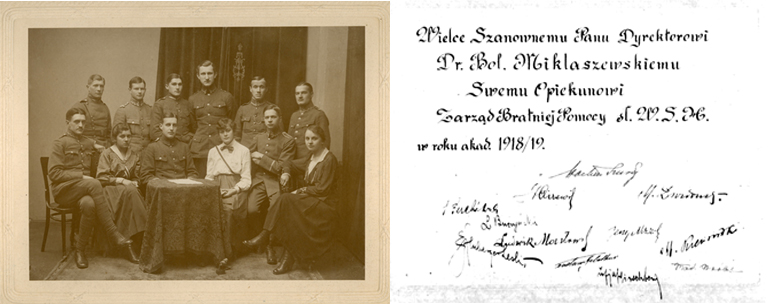
The “Bratnia Pomoc” Society of Students of the Warsaw School of Economics (the academic year of 1918/1919)
In 1906, a small library of around 800 volumes was established for the university needs. In the inter-war period, an idea to house the library’s collection in a separate building emerged. Jan Witkiewicz-Koszyc wrote in the work The Construction of a Library Building of the Higher School of Commerce:
“In designing the Library Building of the Higher School of Commerce I had to investigate and think over the issue itself so as to embrace the task as required. I started my work not by studying the existing library buildings, but I was trying to penetrate into the very essence of library work and the needs of various readers. I studied textbooks on librarianship and looked at this work in practice.”
The building of SGH Library is an example of a remarkable “architecture of light”. An innovative frame construction allowed the use of glazed ceilings and windows 3.5 meters wide. The attic featured twenty-three allegorical emblems made of coloured bricks. With its three glazed domes and twenty beautiful wood-clad columns, the library’s reading room is impressive.
It should be noted that the establishment of this pavilion marked the beginning of the creation of today’s SGH Library, the largest economic library in Poland (its book collection now amounts to about one million volumes, including an exceptionally rich collection of old prints – books published between 1500 and 1800).
Regrettably, World War 2 interrupted the construction of subsequent buildings. Following the end of warfare, the architect Jan Witkiewicz-Koszczyc attempted to adapt the old architectural plans. However, a new design was developed, inspired by the old documentation. A sketch design was drawn up in June 1950, and construction works started in autumn that year.
At present, the Main Building of SGH (admittedly much smaller than the original plans allowed for) is delightful to look at with its central hall, known as the Parachute Hall, with an unusually impressive 28-meter-sided stepped dome rising forty meters from ground level. This building and a beautifully lit pyramid have almost become the symbol of Mokotów.
STUDENTS IN THE INTER-WAR PERIOD
In the pre-war period, studying was not available for everybody because of excessive tuition. The activities of student organisations involved helping students financially. What played the most important role was the "Bratnia Pomoc" Society of Students of the Warsaw School of Commerce, the so-called Bratniak, and the SGH Alumni Association. From 1916 to 1922, the activists of the association were the organisers and the first managers of self-help organisations Warsaw- and country-wide, as well as initiators and editors of “Samopomoc Akademicka” magazine where they promoted the rule of “everyone having the right to study.”
dr BARBARA TRZCIŃSKA, Department of Economic Geography, Collegium of Business Administration, SGH
An article on the later history of SGH will be published in the next issue of the Magazine of SGH Warsaw School of Economics (winter 2022).

